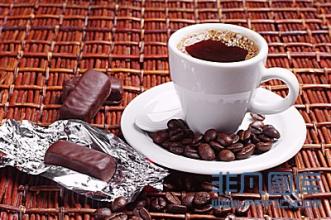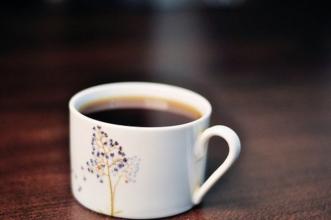Video course on hand-made coffee-what are the ways to make different kinds of coffee?
1. Warm the cup. Everyone knows that the tannins in the coffee do not work as expected, making the coffee very sour, so we should pour hot water into the coffee cup before we start brewing the coffee.
two。 Grind beans. The thickness of hand-made coffee should also be adjusted according to the characteristics of coffee beans, and the powder thickness of deep-roasted coffee beans should be slightly thicker than that of medium-deep roasted beans. Specifically, the deep-roasted beans of carbon-roasted coffee are 4, while those of medium-and deep-roasted beans like Blue Mountain should be 3. 5. If the bean powder is too thick, the coffee is not strong enough, if it is too fine, the coffee will be very bitter. There is also the problem of the quantity of coffee beans. The amount of beans in a cup of coffee is 12-14g, while the quantity of 2 cups should be calculated by formula-2) X2, three or more cups is simple, 3 times 30g, 4 cups 40g, and so on.
3. Assemble utensils. Hand-brewed coffee is mainly composed of three parts, filter paper, filter cup and filter pot. If you pay attention to it, there should be an incubator under the filter pot to prevent the coffee from getting cold during brewing. The size specifications of filter paper, filter cup and filter pot should match. For example, two-person filter paper should be matched with two-person filter cup.
4. Transfer bean powder. Pour the ground bean powder into the combined filter paper, then gently pat the filter cup to pat the soybean powder and smooth the surface. So that the powder can receive water evenly in the following steps.
5. Warm the pot. Pour a small amount of hot water into the bottom pot, shake a few times, and then pour out. Then put the solid bean powder on the bottom pot.
6. It is stifling and steaming. The purpose of steaming is to stuffy the aroma of coffee and prepare for the second brewing. The steaming water temperature should be 93 degrees. Pour water from the center of the bean powder and circle it for 2-3 times, so that all the soybean powder can absorb water evenly. It is best to drop 3-5 drops of water. After absorbing water, soybean powder will expand, from the previous flat to the upward protruding arc. At this time, you can smell the faint fragrance of coffee powder. This step is particularly important and is one of the decisive factors in determining the success of a cup of coffee.
7. Brew. After steaming, put the kettle on a moist cloth to cool down. 25-30 seconds later, the water temperature drops to 89-91 degrees, and you can brew. Generally speaking, the brewing temperature of moderately roasted coffee beans (we call inert beans) is 91 degrees, which can better extract the aroma of coffee beans, while the brewing temperature of deep-roasted coffee beans (lively beans) is 89 degrees Celsius. This water temperature is enough to extract the aroma and bitterness of coffee beans. If the water temperature is too low, the water temperature is a little light, and the water temperature is too high. The brewing water can be a little thicker than the steaming one, but it must also be stable. The amount of coffee can be controlled by the number of laps and the speed of the current. Whether it is brewing one or three cups of coffee, the water simply needs to inject water in a circle from the center, then back to the center from the outer circle, to the center of the circle to collect water, and the brewing is over. In the brewing process, be sure not to wash the water into the filter paper, otherwise the coffee will be very astringent. Generally speaking, the amount of coffee brewed should be 0.5 more than the mark of the pot, otherwise the amount of coffee will not be enough.
8. Fill the cup. Shake the coffee in the pot gently before filling the cup so that it is fully mixed so that each cup of coffee tastes evenly. Then pour out the warm cup of water, pour the coffee into the cup and set the plate for dinner.
9. Matters needing attention. The whole coffee brewing process from warm cup to cup to drink (within 4 cups), the time should not be more than 2 minutes, otherwise the taste of coffee will become sour, astringent, and lose its original aroma.

Important Notice :
前街咖啡 FrontStreet Coffee has moved to new addredd:
FrontStreet Coffee Address: 315,Donghua East Road,GuangZhou
Tel:020 38364473
- Prev

Coffee varieties and varieties of coffee cultivation in various countries
Cuban Cristal Mountain Coffee Roast Fit: Medium Flavor Characteristics: Stable taste. Acid, bitter, sweet balance. Coffee beans are medium to large. In particular, Mount Cristal is Cuba's proudest source of high-quality, large premium coffee beans. Mexican coffee suitable for roasting degree: medium ~ deep taste characteristics: sweet and sour, strong taste. Especially washed coffee beans grown in the highlands
- Next

The coffee variety with the highest caffeine content-the caffeine content of a cup of coffee
The coffee with the highest caffeine content-a cup of coffee has a caffeine content of 1. 5%. Different varieties lead to a variety of caffeine content: generally speaking, Arabica, which belongs to boutique coffee, contains less caffeine, accounting for only about 1.2%, while Robusta sturdy beans have a relatively high caffeine content of about 2.4% or about 2.4%. two。 The temperature and time of baking lead to different levels of caffeine:
Related
- Beginners will see the "Coffee pull flower" guide!
- What is the difference between ice blog purified milk and ordinary milk coffee?
- Why is the Philippines the largest producer of crops in Liberia?
- For coffee extraction, should the fine powder be retained?
- How does extracted espresso fill pressed powder? How much strength does it take to press the powder?
- How to make jasmine cold extract coffee? Is the jasmine + latte good?
- Will this little toy really make the coffee taste better? How does Lily Drip affect coffee extraction?
- Will the action of slapping the filter cup also affect coffee extraction?
- What's the difference between powder-to-water ratio and powder-to-liquid ratio?
- What is the Ethiopian local species? What does it have to do with Heirloom native species?

